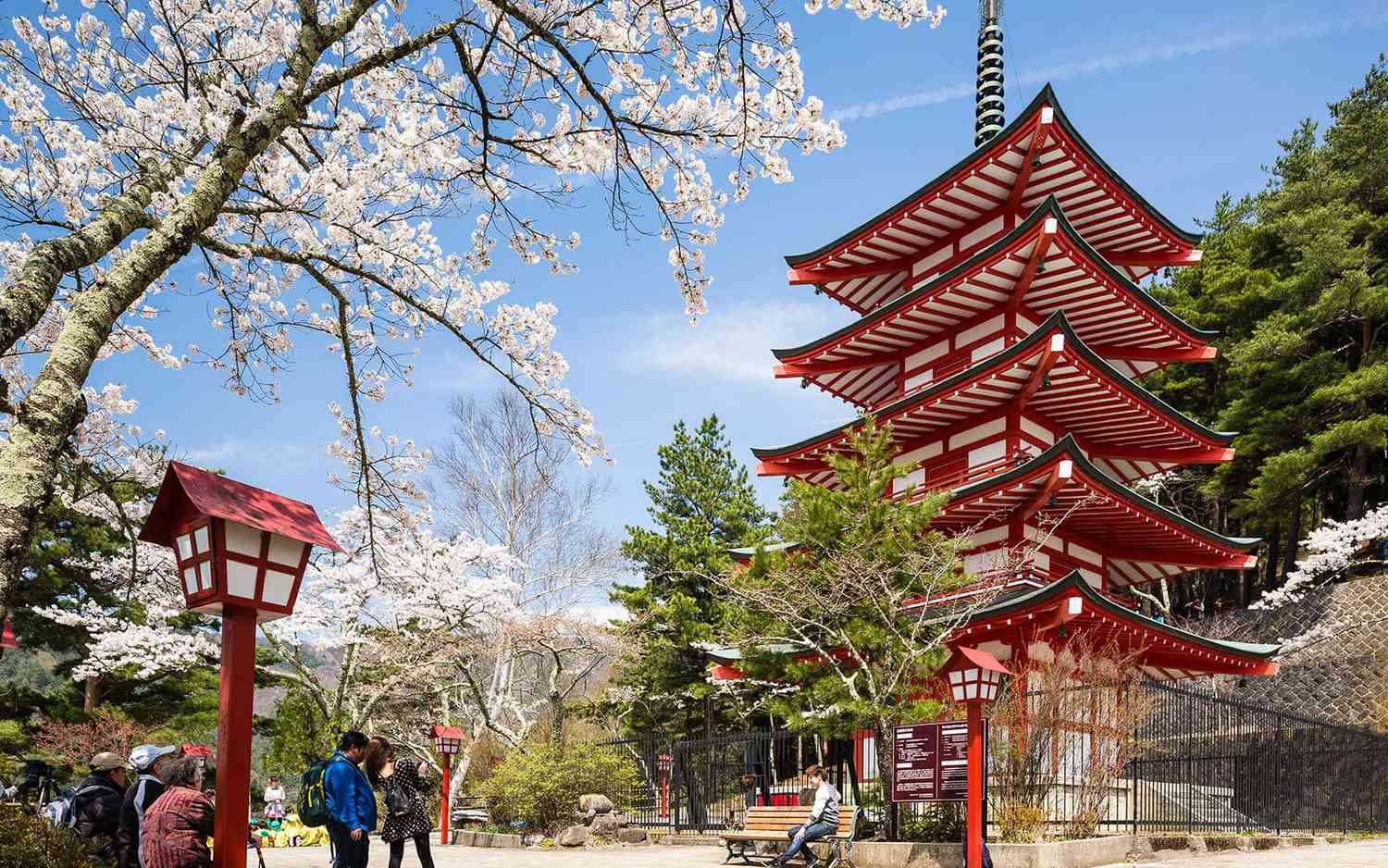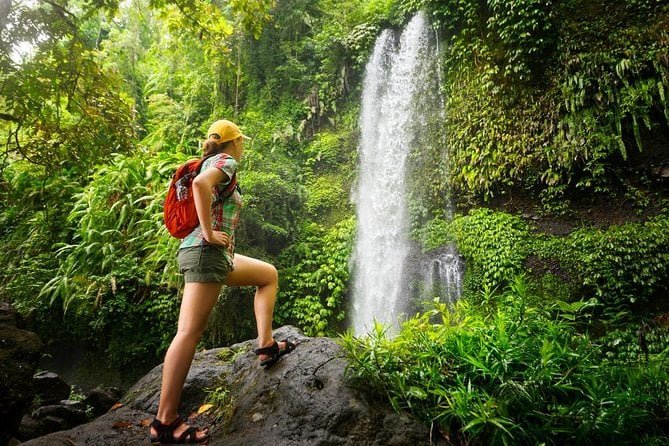“Hey, when’s the best time to visit Japan?”
I get asked that quite a bit. Honestly? It truly depends. Japan’s almost like four separate countries depending on the time of year—blooming and poetic in spring, humid and lively in summer, golden and serene in autumn, and quietly magical in winter.
But if you’re planning a trip throughout Tokyo, Kyoto, Osaka, Nagoya, Mt. Fuji, and Arashiyama, each season offers its own distinct kind of beauty. Let me elaborate—with a few anecdotes, surprises, and practical pointers woven throughout.
Spring (March to May): Cherry Blossoms and Peak Beauty
If you’ve ever dreamt of strolling under masses of pink cherry blossoms, spring is your season.
I visited Kyoto in early April, and it honestly felt like entering a painting. Locals were having picnics under sakura trees with bento boxes and sake, and I joined them—despite having packed peanut butter sandwiches. Zero regrets.
Highlights by City:
- Tokyo: Ueno Park and Meguro River are full-blown sakura wonderlands. Go early in the morning to avoid the masses.
- Kyoto & Arashiyama: Maruyama Park and the Philosopher’s Path burst with color. The Bamboo Grove is extra enchanting when delicate petals drift like snow.
- Mt. Fuji: Head to Chureito Pagoda. Cherry blossoms with Fuji in the background? Unbelievable.
- Nagoya: Visit Yamazakigawa Riverside for more tranquil, crowd-free blossoms.
- Osaka: Osaka Castle Park transforms into a pink party zone. Bonus: food stalls everywhere.
Pro tip: Late March to early April is peak season—but book hotels early. It fills up fast.
Also worth mentioning: Spring isn’t solely for cherry blossoms. Wisteria blooms in late April and early May are just as captivating. Try the Kawachi Fujien Wisteria Garden close to Kitakyushu if you can fit in a day trip.
Summer (June to August): Festivals, Fireworks, and… Perspiration
Let’s be frank—Japan in summer is hot. Like, walking-through-a-sauna hot. However, if you can handle the heat (and some humidity), summer has energy unlike any other time.
I was in Osaka in July and accidentally stumbled into the Tenjin Matsuri—a massive boat festival with fireworks. Sweating through my T-shirt? Yes. Regretting it? Never.
Best Summer Moments:
- Tokyo: Attend the summer festivals like Sumida River Fireworks. Expect yukatas, street food, and big crowds.
- Kyoto: Gion Matsuri in July is legendary. Massive floats, lantern-lit evenings, and traditional music.
- Nagoya: Explore the Port Festival. Way less crowded than Tokyo’s, but still tons of fun.
- Mt. Fuji: Summer is the sole time you can officially climb Mt. Fuji (July to early September). It’s tough. It’s chilly at the peak. But seeing the sunrise from above the clouds? Life-altering.
- Arashiyama: Rent a kayak on the Hozugawa River. Shady, peaceful, and a great way to cool down.
Warning: Japan’s rainy season hits in June. Bring a small umbrella—you’ll need it.
Also, don’t overlook the street food. Summer is prime time for kakigori (shaved ice desserts). I tried a matcha-flavored one in Kyoto—it melted faster than I could eat, but my taste buds were happy.
Autumn (September to November): Fall Colors & Serene Vibes
Ask any seasoned traveler or local and they’ll whisper it: autumn is the best time to visit Japan. Not too hot, not too cold, and the koyo (fall foliage) is absolutely stunning.
I visited Arashiyama in November, and those red maple leaves glowing in the sunlight? It looked like the forest was ablaze. In the best possible way.
Fall Favorites:
- Kyoto & Arashiyama: Tōfuku-ji Temple and Eikando are top spots for leaf-peeping. The Bamboo Grove with red leaves? Insta-worthy.
- Tokyo: Yoyogi Park and Shinjuku Gyoen wear autumn well. Dress in layers—it cools down in the evenings.
- Nagoya: Head to Tokugawa Garden or Korankei Gorge close by. Less touristy, just as stunning.
- Mt. Fuji: The area around Lake Kawaguchiko becomes every shade of orange and crimson. Go in late October.
- Osaka: Minoo Park is a great half-day escape from the city—and you can try maple-leaf tempura!
Bonus: Fewer tourists than spring, and prices drop. Win-win.
Winter (December to February): Snow, Onsens & Quiet Beauty
Winter in Japan is truly underrated. Sure, it’s cold—but it’s also peaceful, sparkling, and cozy. Think steaming bowls of ramen, snow-dusted temples, and hot springs with mountain views.
I went to Tokyo in January and loved it. Crisp air, blue skies, fewer crowds. I even caught the early plum blossoms at Yushima Tenjin. No cherry blossoms, but still gorgeous.
What Winter Looks Like:
- Tokyo: Illuminations everywhere—Roppongi, Shibuya, and Tokyo Midtown go full sparkle-mode.
- Kyoto: Snow-covered shrines like Kinkaku-ji feel straight out of a fairytale. Fewer tourists, too.
- Arashiyama: The Bamboo Grove in snow? Silent, surreal, and soul-soothing.
- Mt. Fuji: Best time to see Fuji, even if you don’t hike it. Clear skies = jaw-dropping views.
- Osaka: Food is even more comforting in winter. Grab piping-hot takoyaki and wander through Dotonbori.
- Nagoya: Head to nearby Gifu or Shirakawa-go for snow-covered traditional villages.
If you enjoy skiing, winter is perfect for exploring Japan’s premier snow destinations like Hakuba or Niseko. You’ll find powdery snow, beautiful mountain views, and cozy ryokans with private onsens.
Note: Japan doesn’t shut down in winter. Just pack warm clothes and embrace the calm.
So, When Is the Best Time to Visit Japan?
Let’s break it down:
| Season | Best For | What You’ll Love | What to Watch Out For |
| Spring | First-timers, photographers | Cherry blossoms, festivals, mild weather | Crowds, high prices |
| Summer | Festival lovers, hikers | Fireworks, Fuji climb, beachy escapes | Heat, humidity, typhoons in late summer |
| Autumn | Nature fans, peace-seekers | Fall foliage, crisp air, fewer tourists | Mountain areas can get chilly fast |
| Winter | Budget travelers, snow lovers, foodies | Snow, hot springs, fewer crowds | Cold temps, short daylight |
One Final Thing
Here’s the truth: there’s no “wrong” time to visit Japan. Every season has its quirks, and part of the fun is discovering them for yourself.
When I went in spring, I thought that was the best time. Then I went in autumn and changed my mind. Frankly, I’ve stopped trying to rank them. Japan simply hits differently depending on your mood and the feeling you’re after. Want a dreamy, flower-filled postcard trip? Go in April. Craving moody forests and fewer tourists? Try November. Want cozy food and snow with your temples? January’s your jam.
The key is to embrace the season. Don’t yearn for cherry blossoms in winter or cool weather in August. Pack appropriately, plan carefully, and keep your expectations flexible. Some of my best memories came from unexpected weather—like sipping hot matcha during a sudden spring rain or getting caught in a snowy Kyoto alley and ending up in a small jazz bar I’d never have discovered otherwise.
Still unsure when to go? Just pick a season that suits your travel style—and go. Japan’s magic isn’t limited to a particular month on the calendar.
Got any questions or your own Japan-season story? Share it in the comments—I’d love to hear when you believe the best time to go is (and maybe even steal your secret spots).




